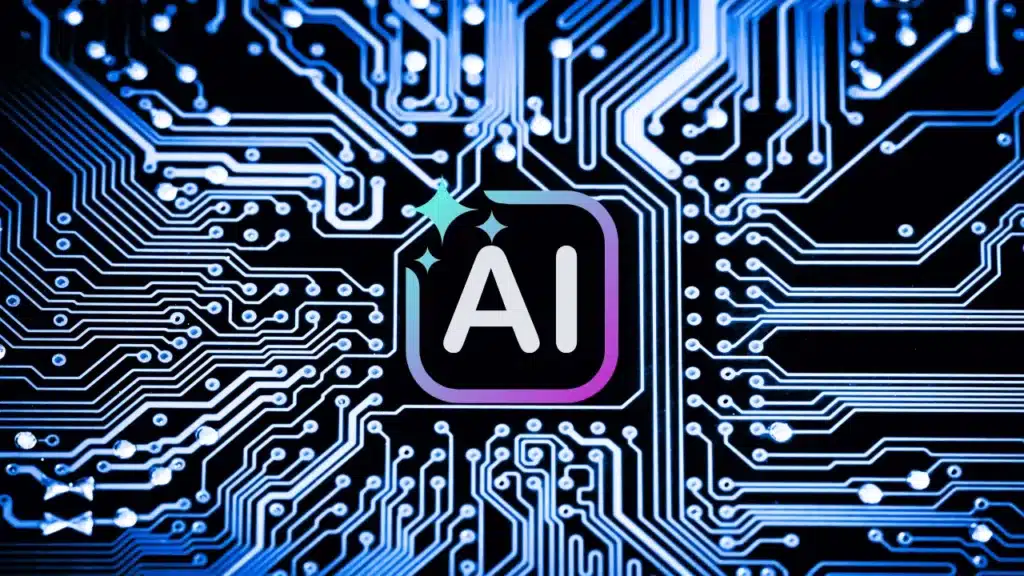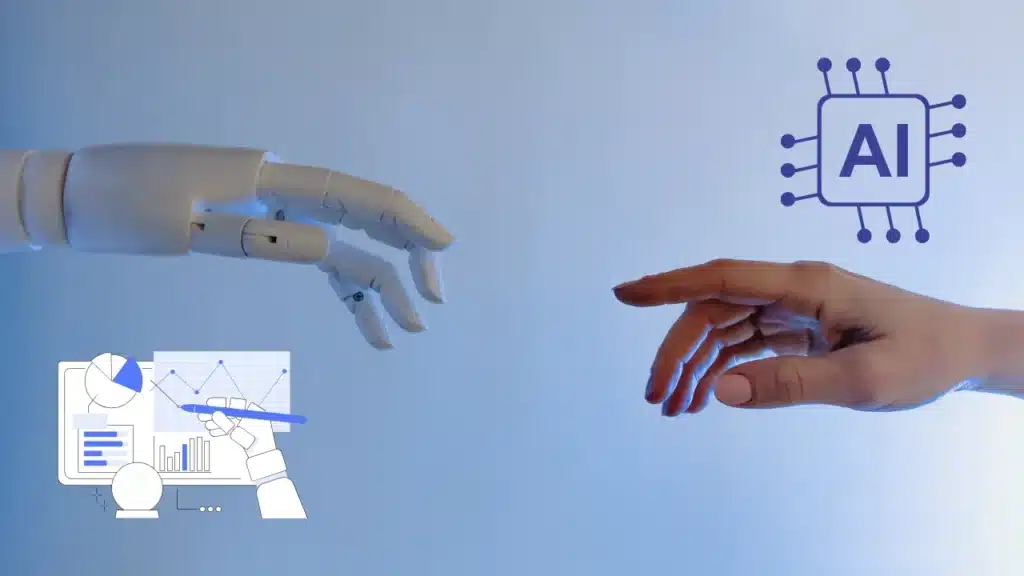Generative AI Vs Predictive AI — ever wondered how these two technologies differ?
While both fall under the umbrella of artificial intelligence, their core purposes and applications are distinct.
So, what exactly sets generative AI vs predictive AI apart? And which one is revolutionizing industries quicker?
Generative AI creates content — images, text, audio — based on learned patterns, while Predictive AI focuses on analyzing data to forecast future outcomes. Think of ChatGPT and DALL-E for generative tasks, while credit scoring systems and weather forecasts rely on predictive models.
Each has its strengths and serves unique business and creative goals. AI experts including Andrew Ng often stress that understanding these AI types is key for smarter tech choices.
Curious which one best suits your needs or your industry?
We are now going to explore generative AI vs predictive AI and break down how each reshapes the digital landscape.
To avoid AI detection, use Undetectable AI. It can do it in a single click.
Table of Contents
What is Generative AI?

Content-generating artificial intelligence is a newer technology designated generative AI. Examples of popular GenAI software include Runway, Midjourney, and ChatGPT. These programs now generate text, images, video, music, and software code for millions of users.
To create content based on patterns it sees in other content, generative AI blends deep learning, neural network techniques, and AI algorithms. It searches for patterns in large datasets to replicate style or structure in a variety of historical or modern content. Models of generative AI outperform conventional machine learning in several ways.
Generative AI provides a technological introduction to the realm of creativity through the use of various machine learning systems, models, algorithms, and neural networks. In general, these models are trained using large datasets that include a variety of data types, including text, images, and audio.
The models can comprehend the underlying structure and produce new content with a similar style and context by examining patterns and relationships in the data. In actuality, generative AI uses machine learning and other AI techniques based on the prior creativity of others, even though its output is categorized as original material.
This is a serious critique of generative artificial intelligence. The question of whether generative AI violates copyright is currently up for debate because this new AI technology mimics human creativity by accessing vast content repositories.
Benefits of Using Generative AI
For those who require to produce content, generative AI has many advantages and a wide range of creative possibilities.
The following are some of the typical benefits of using Generative AI:
- Generative AI is capable of analyzing Dickens’ or Hemingway’s entire novels and creating an original novel that aims to mimic their writing style and conventions. It is superb at producing logical text and images to support writing, translation, and artistic endeavors, and it can create this same mimicry in images and music.
- GenAI is a flexible program for a range of industries, including healthcare and finance, because it helps with data augmentation, personalization, and accessibility.
Limitations of Generative AI
Despite each of its advantages, generative has some difficult limitations, such as historical biases in outputs from ostensibly neutral systems.
These are a few of the typical ones:
- Adversarial attacks, in which input data is deliberately constructed to trick the model into generating inaccurate or unexpected outputs, can target generative models.
- Long passages may be difficult for generative AI models to comprehend and retain context. They may generate inconsistent or in context inappropriate responses and are sensitive to even slight modifications in the wording of the input.
- Large datasets are used to train generative AI models, and if these datasets contain biases or prejudices, the AI system may inadvertently reproduce them in the content it generates.
Use Cases of Generative AI
Generative AI enhances, not replaces, the creativity of writers, graphic designers, artists, and musicians by creating new content. In the business sector, it is particularly useful for developing product descriptions, modifying preexisting designs, and assisting commercial artists in experimenting with new ideas.
The following are some of its typical use cases:
- GenAI is capable of writing annual reports, business letters, and article drafts.
- GenAI is capable of simulating a new painting, producing realistic images from text prompts, and creating new scenes.
- It is able to generate short videos from text and use pre-existing images to create video content.
- By examining a music catalog and creating a new composition, it can create new musical material.
- When provided input from earlier iterations of a product, GenAI can generate a variety of potential modifications that could be considered for a future iteration.
- Product recommendations, customized experiences, and new content that closely reflects their interests are just a few examples of how generative AI can personalize user experiences.
What is Predictive AI?

Predictive AI analyzes data and forecasts future events using statistical algorithms. Sometimes referred to as machine learning, it is a component of predictive analytics. For the purpose of to better inform business decisions, predictive AI analyzes past data, finds trends, and generates predictions.
Its ability to identify anomalies in data flow and predict how they might manifest themselves in future outcomes or behavior demonstrates its worth.
When applied correctly, predictive AI can provide significant competitive advantages and improve business decisions by determining a customer’s purchasing propensity and upsell potential. For the purpose of to forecast future events or findings, predictive AI models examine past data, patterns, and trends.
Read Also >>> Non-Generative AI Explained
Data from multiple sources should be gathered, preprocessed, and cleaned by handling missing values, outliers, or irrelevant variables to be able to build a predictive AI model. After that, the data is divided into training and testing sets. The model is trained on the training set, and its performance is assessed on the testing set.
When the data is prepared, a variety of machine learning techniques, including neural networks, decision trees, and linear regression, can be used to train the predictive AI model. The type of prediction being generated and the characteristics of the data determine which algorithm is used.
By modifying its internal parameters during training, the model discovers the connections and trends in the data. It performs an effort to reduce the discrepancy between the training set’s actual values and its predicted outputs.
This procedure is frequently iterative, in which the model continuously modifies its parameters in response to the error it detects until it achieves the state of perfection. The caliber and volume of training data have a significant impact on the predictive AI models’ performance and accuracy.
Predictive performance happens to be higher for models trained on representative and varied data. In addition, the model’s accuracy may be impacted by the algorithm selection and training parameters.
Benefits of Using Predictive AI
Understanding future trends and gaining additional benefit from each data repository are two advantages for business professionals who use predictive AI.
These are a few of the typical ones:
- Product recommendations, upselling, better customer service, and inventory level optimization are each possible with predictive AI, which can also inform management about future trends, opportunities, and threats.
- Predictive AI provides management procedures higher depth and precision. When applied properly, it raises the probability of success and favorable business outcomes, particularly when it comes to proactive inventory management.
- By providing information about each sector of the data, predictive AI can help organizations extract additional value from the data through improved analysis and accurate predictions.
Limitations of Predictive AI
Despite its advantages, predictive AI is still unable to produce 100% accurate future predictions, which has frustrated some businesses.
Among the prevalent are the following:
- The quality and availability of data are necessary for predictive AI. The AI system may produce faulty predictions if the training data is biased, erroneous, or incomplete.
- There are ethical issues with using predictive AI, particularly with regard to bias, discrimination, and privacy.
- Interpretability is a problem with many predictive models, particularly complex ones such as deep neural networks. Finding any underlying biases in the AI’s decision process or comprehending how it provides its predictions may prove difficult.
- Complex predictive models can be computing costly and resource-intensive to train and implement, which limits their applicability in some contexts.
Use Cases of Predictive AI
Numerous applications of predictive AI are emerging in a variety of sectors. If managers knew about the future, they would always act accordingly to capitalize on it. Anything that improves the probability of knowing the future is extremely valuable in the business world.
Predictive AI use cases include the following:
- The accuracy of financial forecasts can be significantly increased by extracting information from a larger data set and connecting financial data with other business data.
- By identifying unusual activity, AI can identify possible fraud. An odd device, location, or request that does not correspond to a particular user’s typical behavior may occur in banking and e-commerce — for instance, a login from an unknown IP address.
- Use cases for predictive AI in healthcare include anticipating disease outbreaks, identifying patients at higher risk, and identifying the effective treatments.
- In addition to providing marketing strategists the information they require to create successful campaigns, predictive AI can precisely identify the best channels and messaging to employ in marketing.
Types of AI: Generative AI Vs Predictive AI

Machine learning is the fundamental component of both generative and predictive AI. While predictive AI uses machine learning to forecast the future and enhance favorable outcomes by using data to better understand market trends, generative AI transforms machine learning inputs into content.
Creative industries such as fashion, music, and art tend to be where generative AI finds a home. Although there is plenty of overlap, predictive AI is frequently used in marketing, healthcare, and finance. Some of the variations in their applications are depicted in the chart below.
| Generative AI | Predictive AI | |
| Function | Produces fresh content or information | Forecasts using the data that is currently available |
| Training Data | Requires thorough and varied data. | Requires historical data for the purpose to learn and formulate predictions |
| Examples | Creating text and creating images | Regression, classification, and forecasting |
| Learning process | Discovers relationships and patterns in data | Provides predictions by learning from past data |
| Use cases | Creative assignments and content production | Financial forecasting and business analytics |
| Challenges | The output might not be as specific | Restricted to current trends, possibly missing new situations |
| Training complexity | Commonly intricate and resource-intensive | Requires less intricate instruction |
| Creativity | Further imaginative and innovative | Absence of the component of content production |
| Algorithms | Creates content using deep learning and sophisticated algorithms using training data | Uses machine learning and statistical algorithms to evaluate data and generate predictions |
| Objective | Produces unique data or content | Forecasts and evaluates current trends or outcomes |
FAQs – Types of AI: Generative AI Vs Predictive AI
When exploring the types of artificial intelligence, it is essential to understand the differences between generative AI and predictive AI. Generative AI, often referred to as gen AI, focuses on creating new content, using generative AI programs that are driven by language models.
Generative AI creates new images, text, and other forms of media, offering substantial benefits of generative AI in various creative fields. On the other hand, predictive AI is primarily concerned with analyzing existing data to forecast future events. Using sophisticated machine learning algorithms, predictive AI forecasts future trends and behaviors.
While both AI capabilities are necessary, they serve distinct purposes in the realm of AI and machine learning. In practical applications, AI apps that use predictive AI rely on historical data to generate predictive AI forecasts, aiding in everything from inventory management to customer behavior prediction.
Predictive AI offers insights that can drive strategy and operational improvements. Conversely, generative AI models are trained on vast datasets to produce original content. Both generative and predictive AI offer unique advantages, showcasing the diverse potential of AI models in solving different problems.
Ultimately, understanding what’s the difference between these two branches of AI can help organizations use their strengths effectively.
What is generative AI?
Generative AI refers to a class of artificial intelligence technologies that can create new content, whether it be text, images, music, or other forms of media. These systems, such as generative adversarial networks (GANs) and generative ai models, use deep learning techniques to produce outputs that resemble real-world data.
For instance, a generative AI application can generate a realistic image of a person who does not exist, showcasing the technology’s potential in creative fields and beyond.
What is predictive AI?
Predictive AI use data analysis and machine learning for forecasts about future events based on historical data. It uses various algorithms to identify patterns and trends, enabling businesses to anticipate outcomes and informed decisions.
Predictive AI can help organizations in numerous ways, such as predicting customer behavior, sales forecasts, and risk management through predictive analytics.
How do generative AI and predictive AI differ?
The primary difference between generative AI and predictive AI lies in their objectives. Generative AI focuses on creating new data and content, while predictive AI aims to analyze existing data to forecast future outcomes.
While generative ai can create new constructs, such as images and text, predictive AI uses data for informed predictions, often employing machine learning techniques to improve accuracy over time.
What are some common generative AI applications?
There are numerous generative AI applications across various industries.
For example, businesses use generative AI programs to create marketing content, social media posts, and personalized recommendations.
In the entertainment industry, generative AI is employed to compose music and write scripts. In addition, generative AI can create realistic simulations in gaming and virtual reality environments, enhancing user experiences.
Conclusion – Types of AI: Generative AI Vs Predictive AI
As we have explored throughout this blog, generative AI vs predictive AI represent two potent yet distinct approaches to artificial intelligence that are transforming industries across the globe. Generative AI excels at creating new content — whether that is text, images, code, or audio — based on patterns learned from training data.
Meanwhile, predictive AI focuses on analyzing existing data to forecast future outcomes and trends. While these technologies serve different primary purposes, the future of AI probably lies in the thoughtful integration of both approaches.
The choice between generative vs predictive AI is not binary; rather, it depends on your specific use case, available data, and desired outcomes. Many organizations find value in implementing both technologies as complementary programs in their AI strategy.
What is your primary interest in AI technologies?
- Content creation
- Product development
- Data analysis
- Customer experience
- Business forecasting
Share your answer in the comments below!


